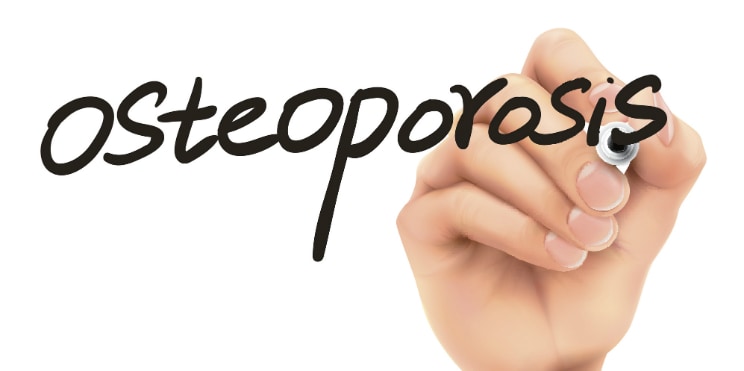As you age, your body will go through many natural changes. Osteoporosis is one condition that can lead to weakened or broken bones. Knowing the best osteoporosis treatment options for women can minimize the effects of this condition, and help you lead a healthy, active lifestyle.
What is Osteoporosis?
Your skeletal structure plays a pivotal role in keeping your body functioning properly. It serves as the framework for the muscles that allow you to move your body, even for the most basic of tasks. Osteoporosis is a condition which affects the bones of your body by reducing their density, making them weaker or more brittle. For women, this often happens during menopause; the typically solid bone structure begins to exhibit a porous consistency, which means you may be more susceptible to fractures and injury.
What Causes Osteoporosis?
The reasons why osteoporosis reduces bone mass is understood by the medical community, yet all the causes of the condition remain somewhat unknown. During the earlier stages of your life, your bone mass is in a constant cycle of being broken down and then replenished. Your bone mass density peaks during your mid to late twenties, and during your mid-thirties the body begins to undergo a change. At this point, your bone mass will start to be lost at a faster rate than it is replenished, which leads to weaker bones if not treated. This is often attributed to reduced amounts of calcium, the most important mineral associated with proper bone health and function.
Who is Most Likely to Get Osteoporosis?
Osteoporosis impacts both men and women – almost 9 million Americans are have been diagnosed with osteoporosis. However, 80% of those living with osteoporosis are women. Medical professionals attribute this to the hormonal changes brought on by menopause, along with the fact that women naturally have lower bone density than men.
During the first five to seven years of menopause, many woman experience accelerated bone loss. As the body continues to produce less estrogen, more calcium is lost. Women who are smaller, drink heavily, smoke cigarettes, or live an inactive lifestyle increase their risk factors for developing osteoporosis with age. Living a healthy lifestyle and incorporating healthy habits such as regular exercise, eating calcium rich foods, and not smoking can help reduce your risk of developing osteoporosis, though it will not eliminate it entirely.
What Are Treatments Options for Osteoporosis?
Thankfully, since osteoporosis is quite common, several treatment options have been developed for women over time. First and foremost, all women should take calcium and vitamin D supplements to maintain their bone health; dosage depends on age and other factors.
Some medications, such as Evista, work by replenishing estrogen that is lost naturally through menopause and helps reduce bone density loss. Another common treatment is the use of bisphosphonates, such as Fosamax and Actonel. These drugs work by halting the decline in bone mass caused by the aging process. This allows your body to increase the production of bone mass at greater than average speeds.
A bone density screening can help you learn if you have weak bones or osteoporosis before you break a bone, not just afterwards. It can also help predict your chance of breaking a bone in the future, and monitor if your bone density has improved from treatment. Generally, you should start bone density screening at age 65 unless you have other risk factors that could contribute to bone density loss.
When it comes to bone health, being proactive is key; speak with your doctor about your treatment plan for loss of bone density. If you are concerned about your bone health and osteoporosis and would like to know more about treatment options in Little Rock, contact The Woman’s Clinic at (501) 664-4131 to schedule an appointment and learn more.

